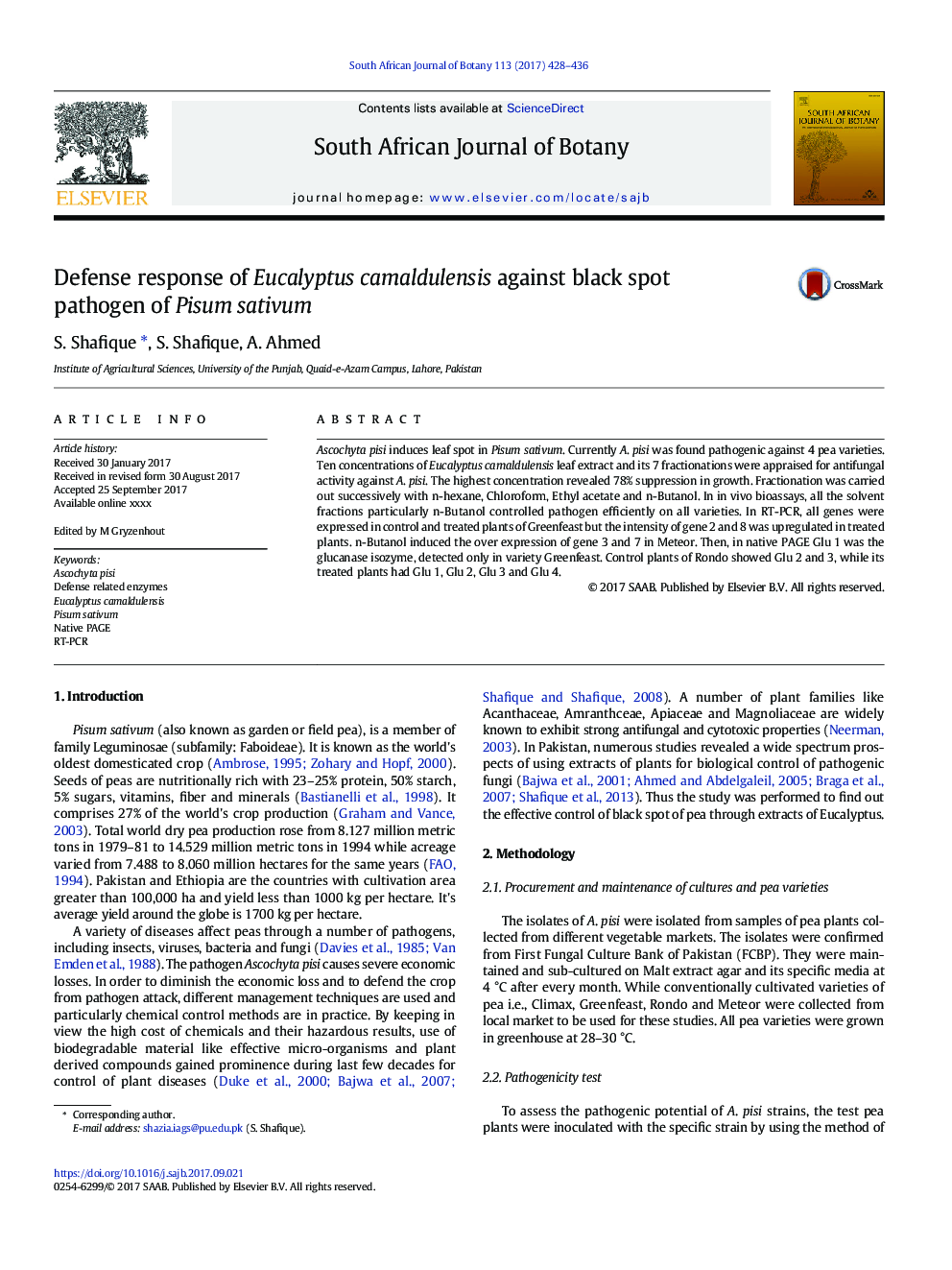| Article ID | Journal | Published Year | Pages | File Type |
|---|---|---|---|---|
| 5762931 | South African Journal of Botany | 2017 | 9 Pages |
â¢The highest concentration induced 78% suppression in growth.â¢In in vivo bioassays, n-Butanol controlled pathogen efficiently on all varieties.â¢In RT-PCR, all genes expressed in control/treated plants of Greenfeast with upregulated intensity of gene 2 & 8 in treated.â¢In native PAGE Glu 1 was glucanase isozyme, detected only in Greenfeast.â¢Control plants of Rondo showed Glu 2 and 3, while treated plants had Glu 1, 2, 3 and 4.
Ascochyta pisi induces leaf spot in Pisum sativum. Currently A. pisi was found pathogenic against 4 pea varieties. Ten concentrations of Eucalyptus camaldulensis leaf extract and its 7 fractionations were appraised for antifungal activity against A. pisi. The highest concentration revealed 78% suppression in growth. Fractionation was carried out successively with n-hexane, Chloroform, Ethyl acetate and n-Butanol. In in vivo bioassays, all the solvent fractions particularly n-Butanol controlled pathogen efficiently on all varieties. In RT-PCR, all genes were expressed in control and treated plants of Greenfeast but the intensity of gene 2 and 8 was upregulated in treated plants. n-Butanol induced the over expression of gene 3 and 7 in Meteor. Then, in native PAGE Glu 1 was the glucanase isozyme, detected only in variety Greenfeast. Control plants of Rondo showed Glu 2 and 3, while its treated plants had Glu 1, Glu 2, Glu 3 and Glu 4.
